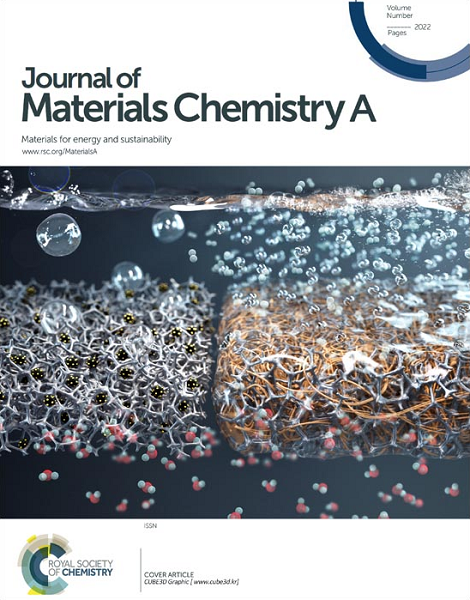延长前驱体溶液的保质期和抑制碘化物的光诱导氧化以实现高效耐用的钙钛矿太阳能电池
IF 10.7
2区 材料科学
Q1 CHEMISTRY, PHYSICAL
引用次数: 0
摘要
前驱体溶液的持久保质期是获得高质量和稳定的钙钛矿薄膜的关键,它对钙钛矿太阳能电池(PSCs)的效率和稳定性有重要影响。然而,钙钛矿中的碘化物很容易被氧氧化,特别是在光照射下,导致前驱体溶液的保质期缩短,损害钙钛矿薄膜。在此,我们将硫代硫酸钠(ST)引入钙钛矿油墨中,以原位调整钙钛矿的结晶并抑制碘化物的氧化。正如预期的那样,这种ST策略有效地抑制了碘化物氧化,抑制了相变和分离,从而获得了高结晶度和减少非辐射复合的高质量钙钛矿膜。有趣的是,前驱体溶液的保质期延长了60天以上,并且钙钛矿薄膜在1次阳光照射60天内没有发现相变。因此,经过一流st处理的器件实现了25.25%的PCE,最小电压亏缺为0.35 V。更重要的是,未封装的器件表现出出色的长期存储、热稳定性和光浸泡稳定性,老化后的效率分别为原始效率的93%、85%和85%。这项工作为延长前驱体溶液的保质期,提高psc的效率和操作稳定性提供了有效的途径。本文章由计算机程序翻译,如有差异,请以英文原文为准。
Extending Shelf-life of Precursor Solutions and Inhibiting Light-indued Oxidation of Iodides for Achieving Highly Efficient and Durable Perovskite Solar Cells
Durable shelf-life of precursor solutions are crucial for obtaining high-quality and stable perovskite films, which significantly affect the efficiency and stability of perovskite solar cells (PSCs). However, iodides in perovskites are easily oxidized by oxygen, especially under light exposure, leading to reducing the shelf-life of precursor solutions and compromising perovskite films. Herein, we introduce sodium thiosulfate (ST) into perovskite inks to in-situ tailor the crystallization of perovskites and suppress oxidation of iodides. As expected, this ST strategy effectively suppresses the iodide oxidation, inhibits phase transition and separation, thereby obtaining high-quality perovskite films with enhanced high crystallinity and reduced non-radiative recombination. Interestingly, the shelf-life of precursor solutions was extended over 60 days, and no phase transition can be found in perovskite films under 60 days of 1 sun light exposure. As a result, the champion ST-treated device achieves a PCE of 25.25% with a minimal voltage deficit of 0.35 V. More importantly, the unencapsulated devices demonstrate excellent long-term storage, thermal and light-soaking stability, which deliver 93 %, 85 % and 85 % of their original efficiencies after ageing, respectively. This work provides an effective approach to extend the shelf-life of precursor solutions and improve the efficiency and operational stability of PSCs.
求助全文
通过发布文献求助,成功后即可免费获取论文全文。
去求助
来源期刊

Journal of Materials Chemistry A
CHEMISTRY, PHYSICAL-ENERGY & FUELS
CiteScore
19.50
自引率
5.00%
发文量
1892
审稿时长
1.5 months
期刊介绍:
The Journal of Materials Chemistry A, B & C covers a wide range of high-quality studies in the field of materials chemistry, with each section focusing on specific applications of the materials studied. Journal of Materials Chemistry A emphasizes applications in energy and sustainability, including topics such as artificial photosynthesis, batteries, and fuel cells. Journal of Materials Chemistry B focuses on applications in biology and medicine, while Journal of Materials Chemistry C covers applications in optical, magnetic, and electronic devices. Example topic areas within the scope of Journal of Materials Chemistry A include catalysis, green/sustainable materials, sensors, and water treatment, among others.
 求助内容:
求助内容: 应助结果提醒方式:
应助结果提醒方式:


